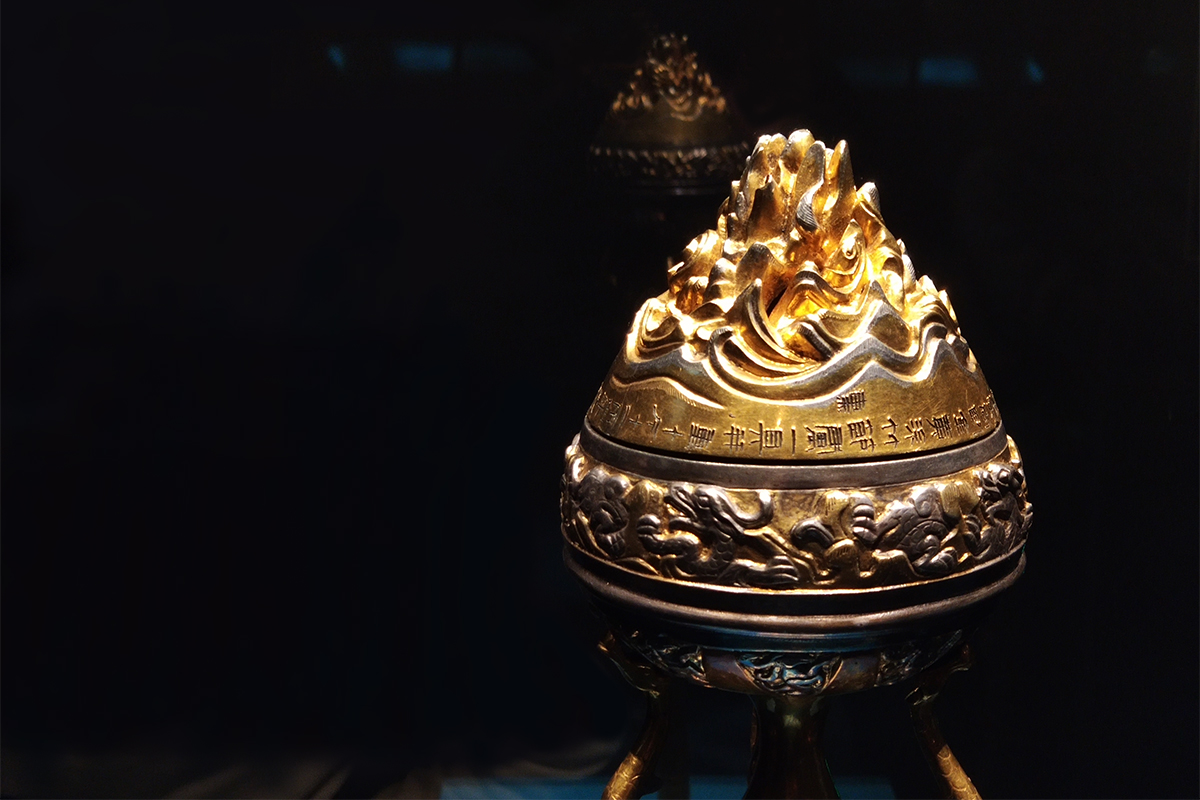Bronze, Text, and State
Creating the Epigraphic Landscape in the Emerging Chinese Empire
2019–2025
RFB06

Both the urban and natural landscapes in imperial China were famous for a high concentration of writing, epitomised by stone steles, wooden signboards and monumental rock inscriptions. Much of this legacy is still visible today and continues to imbue China’s public spaces with a distinct visual character. Yet, for more than a thousand years after the invention of Chinese script, the epigraphic landscape in Chinese settlements was shaped by a different medium: artefacts made of bronze. But while in 700 BCE their use context was predominantly family-based or communal at best, half a millennium later, they pervaded public spaces as state-building instruments of an early empire. How did this transition come about, what were the key factors in this development, and what can it reveal about a crucial period of Chinese history when a colossal empire emerged out of a prolonged period of disunion? Facing the dearth of transmitted sources for this formative period of Chinese history, this project takes inscribed bronze artefacts as a point of departure and unravels their value for understanding this major shift in communication paradigm. Triangulating epigraphic, manuscript and archaeological sources, the project offers novel insights into major developments in state administration, standardisation, unification, workshop organisation, production techniques, transmission of know-how, literacy, and ritual performance. The examples below illustrate some of the approaches and contributions of this project.
According to transmitted sources, the earliest public inscriptions in Early China belonged to the realm of law and ritual performance. Similar to ancient Rome, the penal code was allegedly cast in bronze and displayed publicly in some Chinese states in the late sixth century BCE. Elsewhere, large stone artefacts were inscribed during the fourth century BCE with royal prayers for divine aid and presented to spirits during public ritual performances. While none of these artefacts are extant, this project explores the practices of inscribing law and prayers on a wide range of early written artefacts to gain a better understanding of the ritual and sociopolitical underpinnings of these practices. This includes the study of two recently discovered bamboo-slip manuscripts *Accomplished Man (Cheng ren 成人) and *Four Announcements (Si gao 四告), now in the collection of Tsinghua University in Beijing. These manuscripts shed much new light on the development of early Chinese legal thought and prayer practices. My work on these manuscripts also contributes to the international collaborative project Tsinghua University Warring States Bamboo Manuscripts Studies and Translations.
The gradual permeation of epigraphy into wider strata of society presented production challenges in terms of know-how, literacy, and workshop organisation. The traditional bronze inscription technique was even more intricate then formerly thought, as shown in my article ‘How Were Bronze Inscriptions Cast in Ancient China? New Answers to Old Questions’. The spike in the production of inscribed artefacts required more literate craftsmen and more efficient inscription techniques. Workshops devised ingenious strategies to meet these challenges, including mechanical reproduction from the late eighth century BCE. In a nearly finalised study, based on a close scrutiny of several garbled inscriptions from the seventh century BCE, I identified yet another previously unknown strategy: to facilitate the inscription process, the text of the master copy was broken down into short passages of several words, each written out on a separate bamboo or wooden board. Thanks to these ‘intermediate models’, even illiterate craftsmen could prepare moulds for inscriptions using the traditional technique and thus avoid bottlenecks in the production process. A preliminary draft with some of the findings is available in Chinese here. To explore the issue of ‘intermediate models’ from a cross-cultural perspective, together with Peera Panarut we organised the workshop ‘Manuscripts at the Service of Epigraphy: Master Copies, Templates, and Other Exemplars in the Production of Pre-Modern Inscriptions’. We are currently finalising an edited volume with selected contributions focusing on South, Southeast and East Asian epigraphic cultures.
A close study of the visual organisation of inscriptions cast or chiselled on mass-produced bronze weapons during the third century BCE reveals a breathtaking and hitherto unimaginable degree of standardisation and allows for the reconstruction of the emergence of standardisation, the process of its gradual refinement, and the underlying regulations. This approach is exemplified in my study ‘Where There Is Unity, Order Results: Manufacturers’ Labels and the Creation of Standards in the Late Warring States Period’. It centres around workshops in the capital city of the state of Hán, which maximised the efficiency of the inscription process, quality control and accounting procedures by using a stone inscription matrix that could be repeatedly impressed in clay moulds for bronze spearheads and dagger-axes. Remarkably, some of these matrices featured replaceable stamps for names and year notations, prolonging their service life.
The watershed moment in the shaping of Chinese epigraphic landscape occurred when the state starts employing objects stationed in public places, such as standard weights and measures, to promote its political ideology. While this only happens in the late third century BCE, it followed three centuries of gradual development during which epigraphy was embraced by rulers and state administration as a means to enhance dissemination of legal codes, promulgate standards, enforce accountability, and facilitate accounting and supervision procedures. My Artefact of the Month essay ‘Scoop of Filial Piety?’ introduces a bronze measure cast in the state of Qin in the third century BCE that bears witness to both stages of epigraphic practice. On its handle it carries a serial number and information about its place of use and volume. On the other side, it features two edicts by Qin emperors engraved in 221 and 209 BCE which more than anything else, I argue, propagated the imperial ideology and enhanced the image of the two issuing emperors.
People
Project lead: Ondřej Škrabal
